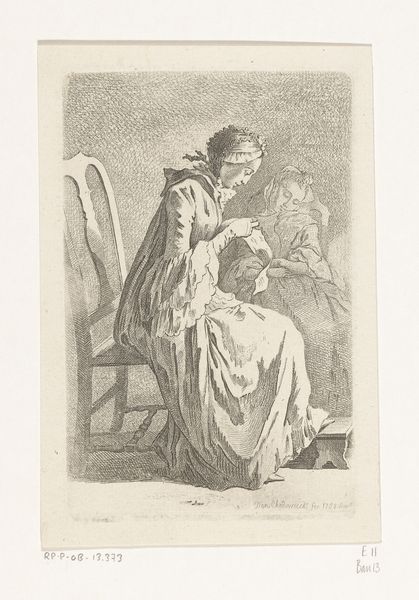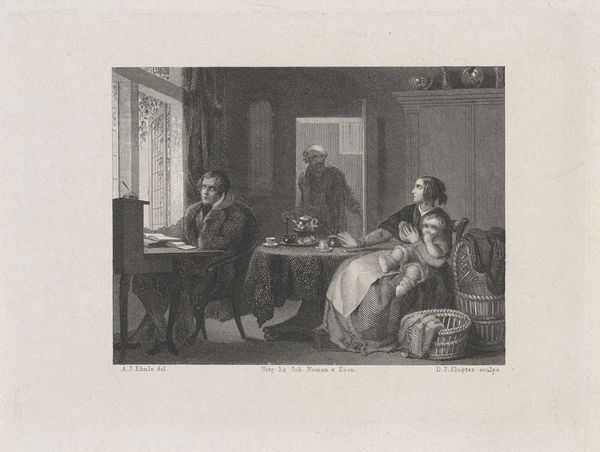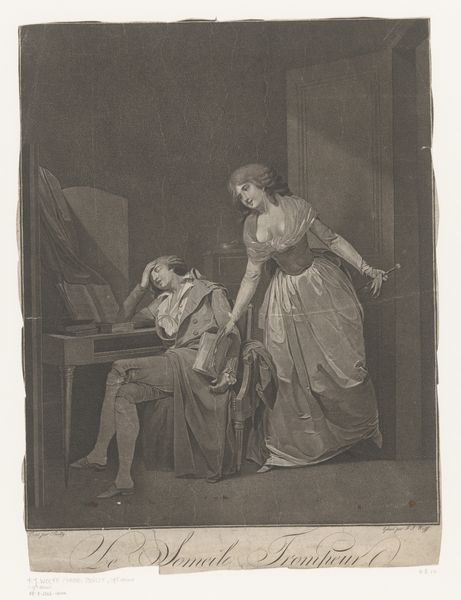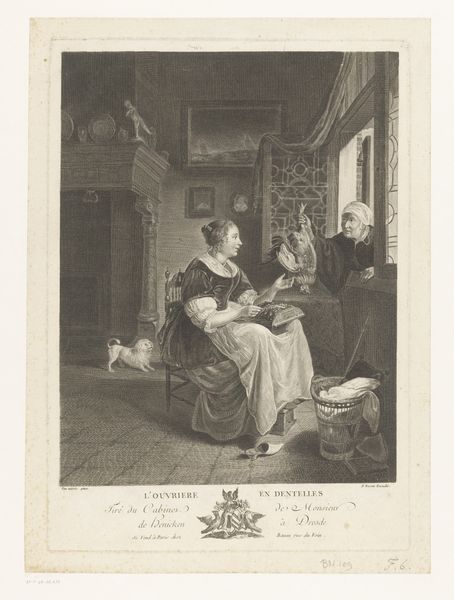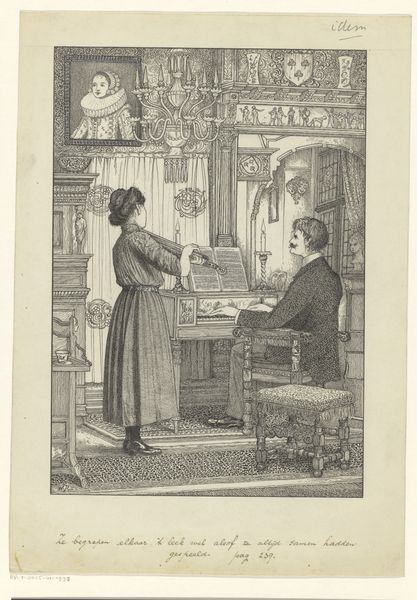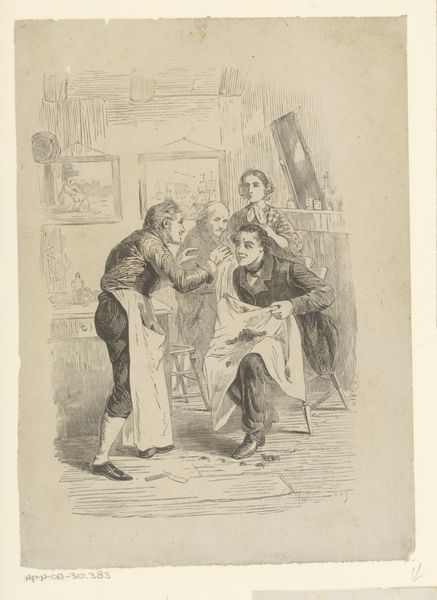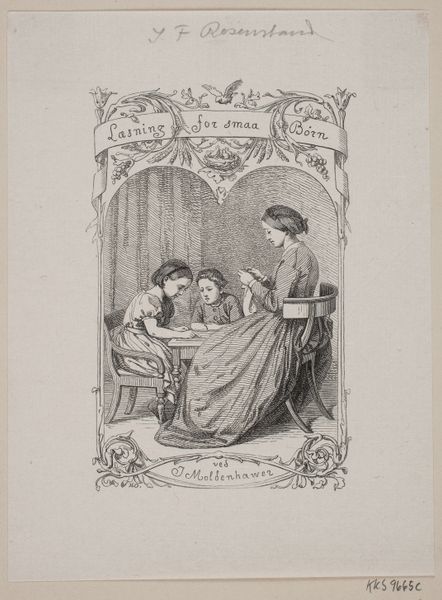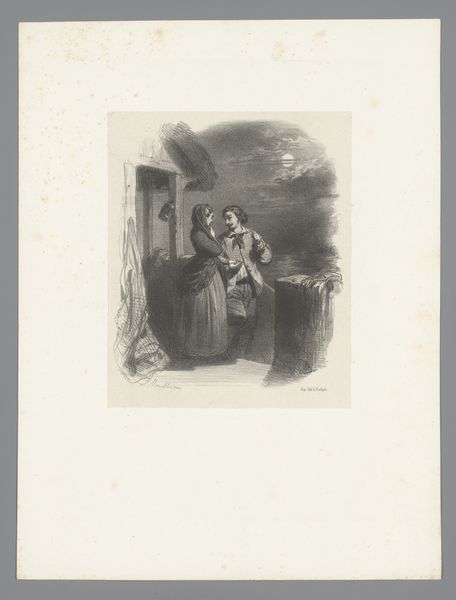
Interieur met pianospelende vrouw, twee luisterende mannen en twee spelende kinderen 1832 - 1905
0:00
0:00
Dimensions: height 148 mm, width 110 mm
Copyright: Rijks Museum: Open Domain
Editor: This engraving, titled "Interieur met pianospelende vrouw, twee luisterende mannen en twee spelende kinderen" by Eugène Leguay, gives us a peek into a 19th-century interior. The scene feels very staged to me, a bit artificial. What strikes you about this piece? Curator: The staged nature you observe is important. How does this image, with its carefully arranged figures and seemingly casual details, speak to the public perception of domesticity in 19th-century society? Notice the emphasis on performance, both musical and social. The woman at the piano embodies cultured femininity, while the attentive men and playing children reinforce the ideal of a harmonious, well-ordered household. What role do these images play in shaping societal expectations? Editor: So it's less about capturing reality and more about promoting a particular ideal? The scene seems a little too perfect, perhaps. Curator: Exactly! And that constructed ideal had political implications. Consider the rising middle class of the time and how such imagery contributed to their social aspirations and distinctions. Who had access to such leisure, such instruments, such staged familial bliss? The engraving becomes a visual tool for social mobility and defining bourgeois identity. Notice how the very medium, engraving, makes it reproducible, thus spreading this message. What happens when the illusion falls apart? Editor: That makes me see it completely differently. It’s a statement, a carefully crafted piece of propaganda in a way, rather than a neutral depiction of family life. Curator: Precisely! Think about how similar depictions appear in advertising, political posters, or even news reports today. Images are rarely neutral. They almost always reinforce or challenge power structures. What responsibility do artists, and institutions displaying their work, have in unveiling these embedded messages? Editor: I see now. By understanding the context, we can start to question the narratives these images present. It’s made me think much more critically. Curator: Indeed. And hopefully, inspires you to ask similar questions of all art you encounter. It’s not just about beauty; it’s about power and its visual representation.
Comments
No comments
Be the first to comment and join the conversation on the ultimate creative platform.
